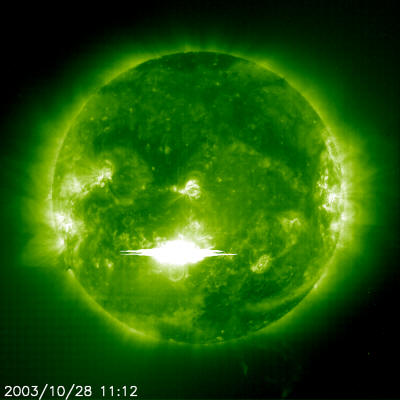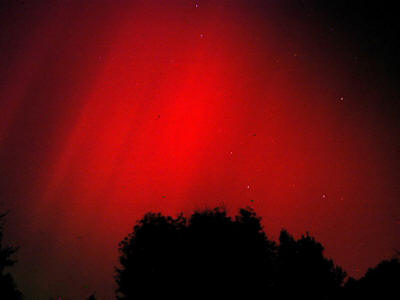|
|
|
from
NASA Website
Solar flares are classified according to their strength.
The smallest ones are
A-class, followed by B, C, M and X, the largest.
Solar flares are giant explosions on the sun that send energy, light and high speed particles into space.
These flares are often associated with solar magnetic storms known as coronal mass ejections (CMEs).
The
number of solar flares increases approximately every 11 years, and
the sun is currently moving towards another solar maximum, likely in
2013. That means more flares will be coming, some small and some big
enough to send their radiation all the way to Earth.
The smallest ones are A-class (near background levels), followed by B, C, M and X. Similar to the Richter scale for earthquakes, each letter represents a 10-fold increase in energy output.
So an X is ten times an M and 100 times
a C. Within each letter class there is a finer scale from 1 to 9.
Although X is the last letter,
there are flares more than 10 times the power of an X1, so X-class
flares can go higher than 9. The most powerful flare measured with
modern methods was in 2003, during the last
solar maximum, and it
was so powerful that it overloaded the sensors measuring it. The
sensors cut out at X28.
Loops tens of times the size of Earth
leap up off the sun's surface when the sun's magnetic fields cross
over each other and reconnect. In the biggest events, this
reconnection process can produce as much energy as a billion
hydrogen bombs.
X-class flares on December 5 and December 6, 2006, for
example, triggered a CME that interfered with GPS signals being sent
to ground-based receivers.
With advance warning many satellites and spacecraft can be protected from the worst effects.
The Solar and Heliospheric Observatory (SOHO) spacecraft captured this image of a solar flare as it erupted from the sun early on Tuesday, October 28, 2003.
Credit: NASA/SOHO
resulted in this aurora visible in Mt. Airy, Maryland.
Credit: NASA/George
Varros.
|



